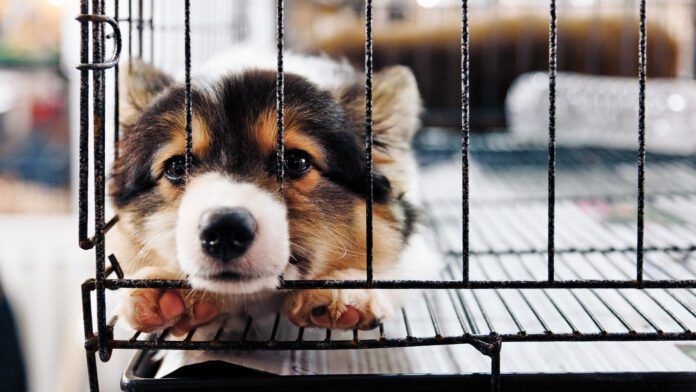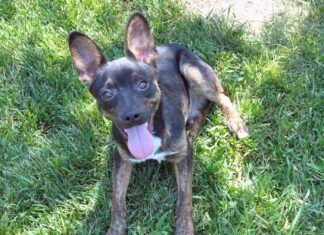How do you help a puppy with separation anxiety? Well, note that true separation anxiety in a puppy would be rare. Most puppies suffer from separation distress because they were never trained to be alone or separated from their humans. It’s still traumatizing for both the puppy and the human so properly addressing this is important to move forward successfully without creating true separation anxiety in the future.
Note: If your puppy is suffering from true separation anxiety, which includes destructive behavior like eliminating nearly immediately after being left alone (even if they have just done so before you left) or causing harm to themselves trying to get out of the crate or an enclosed area, then you should speak with either a veterinary behaviorist or a separation anxiety specialist as that is a true mental health emergency.
Puppy Separation Anxiety vs. Distress
Although technically not separation anxiety, separation distress can include whining and crying, perhaps howling but no self-harm or destruction. It can include periodic elimination when left alone but that result in of itself is not specific to just separation anxiety. Panting and drooling as well as paw sweating can be additional signs of separation distress. Pacing is another sign as well as the overall inability to relax when alone.
Training a Puppy to Accept Separation
Helping a puppy to feel safer when left alone is a multi-layered process. The space that the puppy is left in when alone, whether it is a crate or an ex-pen or even a dog-proofed room, should be a space where they regularly spend happy time with you in, such as your kitchen, bedroom, or family room. It should not be a crate in a basement that the puppy only gets placed in when their humans are leaving. That opens the door for anxiety.
Your puppy should have sufficient mental and physical enrichment and exercise prior to an extended period alone. A nice long walk with lots of sniffing (sniffari), as well as interactive play with you and calming enrichment such as a snuffle mat after energizing physical activity will go a long way toward creating a calm stress-free baseline. Your puppy should have been fed recently and allowed sufficient time to eliminate so that need doesn’t create anxiety in him when you are gone. Knowing your puppy’s elimination habits can be very helpful to timing this properly.
Crate training in a positive manner in advance of leaving your puppy alone is the kindest act that you can do for them to have a calmer puppy when they are alone.
Starting by simply leaving your puppy alone when you visit the bathroom can be a good option. Gradually leading up to perhaps showering or doing laundry on another floor can be helpful. Going out the door to grab the mail is among the next steps. I like to add these things into the day as soon as I get a puppy. My current puppy was taught to be alone at the breeders (with other dogs), but when I got him and crated him initially, with my other dog in an ex-pen next to him, he panicked. I added Vetriscience Composure (now called Calm and Confident) at an appropriate dose about 30 minutes before exits and that helped, as did leaving him an easy to empty puppy Kong as well as all the other previous steps that I mentioned.
Some experts will tell you to ignore your puppy when you leave and return instead of acknowledging them. I disagree. I am in the camp that believes you should not do drama over either but still acknowledge that you are saying bye and hi to a family member, just like you would with any other family member. I choose to say, “I’ll be back.” And I name where I am going (work, store).
When I return, I verbally acknowledge my dogs and act happy to see them. I am relaxed and not acting urgently to release them. I think relaxed versus drama is important, especially to drama-prone puppies as mine was when he was younger. I believe ignoring them when leaving and returning unless they are calm creates more neediness.
The bottom line is that being casual about exits and returns as well as providing a good foundation that allows for all possible needs having been met before extended absences will be your magic wand for easier separations.






